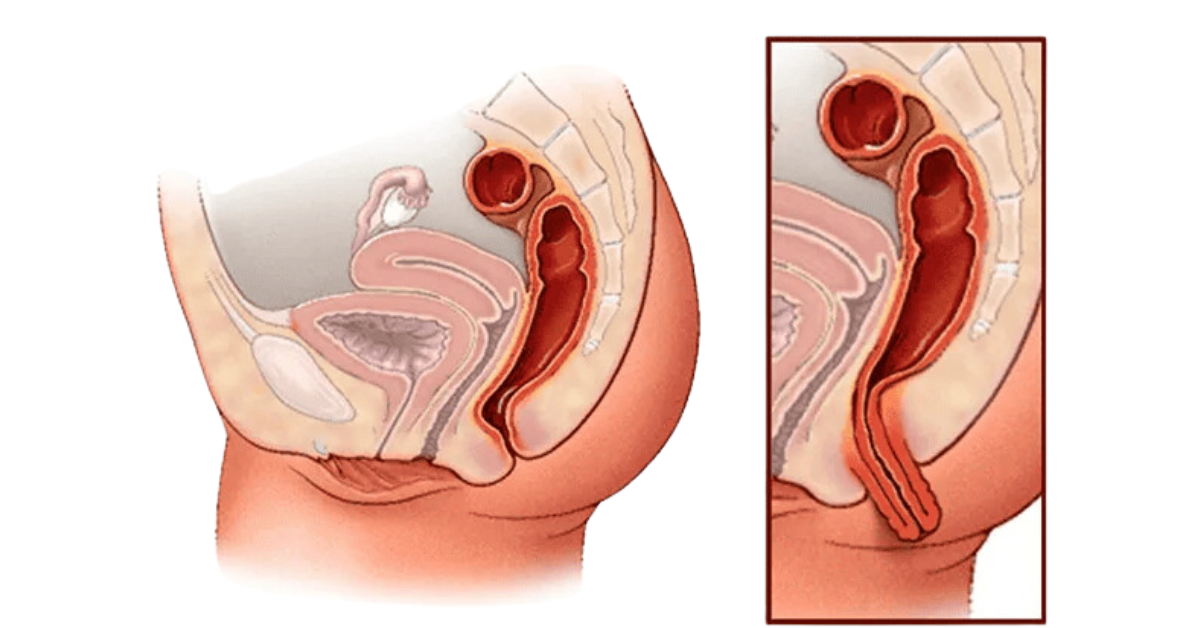There are substantial distinctions in the development and treatment of rectal prolapse and hemorrhoids, despite the fact that both illnesses can cause identical problems in the rectum. Rectal prolapse and hemorrhoids have different symptoms and indicators; therefore, it’s important to know the difference to get the right therapy.
What is rectal prolapse?
The rectum is near the very end of your colon, right before the anus. The urge to defecate is activated when feces reach the rectum, and the muscles of the pelvic floor surrounding the rectum work together to expel the stool through the anus.
When the rectal tissue deteriorates and stops providing enough support, it might slip or fall out of position. This makes the rectum stick out through the anus; it’s called rectal prolapse. This is the opening via which your feces will leave your body.
Symptoms of Rectal Prolapse
Rectal prolapse can cause a variety of symptoms, including
- Difficulty passing stool,
- A feeling that you are not completely emptying your system and
- The spilling of mucus or feces.
- After giving birth, rectal prolapse is more common in women.
Types of Rectal Prolapse
The three main forms of rectal prolapse are:
- Partial Prolapse: When the rectum lining protrudes through the anus during bowel movements, it is called a partial prolapse. However, after the passage of bowel movements, the lining returns to its usual position.
- Complete Prolapse: When the whole rectum wall sticks out through the anus, as happens with bowel movements or other activities like walking, and won’t go back into its usual place without help, it’s called complete prolapse.
- Internal Prolapse: Internal prolapse is a condition in which the lining of the rectum becomes visible outside of the anus rather than protruding through it.
You can also read: Rectal Prolapse: Symptoms, Causes and Treatment
What are hemorrhoids?
Inflamed veins in the anus or rectum are called hemorrhoids or piles. Itching, bleeding, soreness, and discomfort are all possible side effects. Two forms of hemorrhoids are commonly encountered:
Internal Hemorrhoids When internal hemorrhoids expand, they can bleed and prolapse, but otherwise, they are often painless and develop inside the rectum.
External Hemorrhoids Painful sitting and bowel motions are common complaints from people with external hemorrhoids, which form under the skin around the anus. You can also get irritation and bleeding from them.
Which symptoms are common among rectal prolapse and hemorrhoids?
The symptoms of hemorrhoids and rectal prolapse are quite similar, including:
- External prolapsed tissue
- Pain in and around anus
- Symptoms of diarrhea
- Rectal bleeding
- Clear exudate
- Constipation and straining
What are the causes of hemorrhoids and rectal prolapse?
They are both brought on by the same thing. Repetitive strain injuries during bowel movements or pelvic floor dysfunction following childbirth are common causes of both disorders. In most cases, the following can raise your chances of getting either disease:
- Postpartum (recently given birth) or are expecting a child.
- You experience irregular bowel movements, like chronic constipation or diarrhea.
- Straining to pass stool.
It may be prudent to schedule an urgent appointment with a gastroenterologist if you experience any of the more concerning symptoms listed above, such as rectal bleeding or mucus discharge. If you are concerned about anything, a gastroenterologist can diagnose it.
Treatment of Rectal Prolapse and Hemorrhoids
Treatment of Rectal Prolapse
The surgical procedure known as a laparotomy is used to treat rectal prolapse. The surgeon makes a single big incision in the belly and then lifts and pulls the rectum straight before sewing it to the inside surface.
Slender instruments are inserted into the abdominal area through small incisions during laparoscopy. Comparatively, it takes far less time and is far less intrusive than the open procedure.
Treatment of Hemorrhoids
Advanced laser surgery is the gold standard for treating piles.
In contrast to more conventional methods, this one does not necessitate incisions of any kind. Laser treatment involves directing and delivering laser energy to the afflicted area, which aids in the internal shrinkage of hemorrhoidal nodes. This aids in decreasing blood flow, which causes hemorrhoids to form abnormally. Minimal discomfort or bleeding may occur after the procedure. It lessens the likelihood of complications and the length of hospital stays.
Preventing Rectal Prolapse and Hemorrhoids
- Getting rid of unhealthy routines and replacing them with more modern ones should be your top priority.
- Keep gastrointestinal issues at bay by eating foods that are high in fiber.
- Make sure you drink lots of water to stay hydrated.
- Don’t strain yourself to pass stool.
- Stay active.
- Don’t use phone in the toilet; doing so will save you time and prevent any potential issues down the road.
- At the first stage of piles, you may find relief with over-the-counter pain medicines, warm baths, and topical treatments.
Conclusion
Don’t hesitate to seek medical attention if you notice any worsening of your symptoms. A precise and efficient treatment can be yours with an early and thorough evaluation. Go for pile and rectal prolapse consultations with Dr. Avadh Patel, a colorectal surgeon in Ahmedabad, at Kaizen Hospital.

